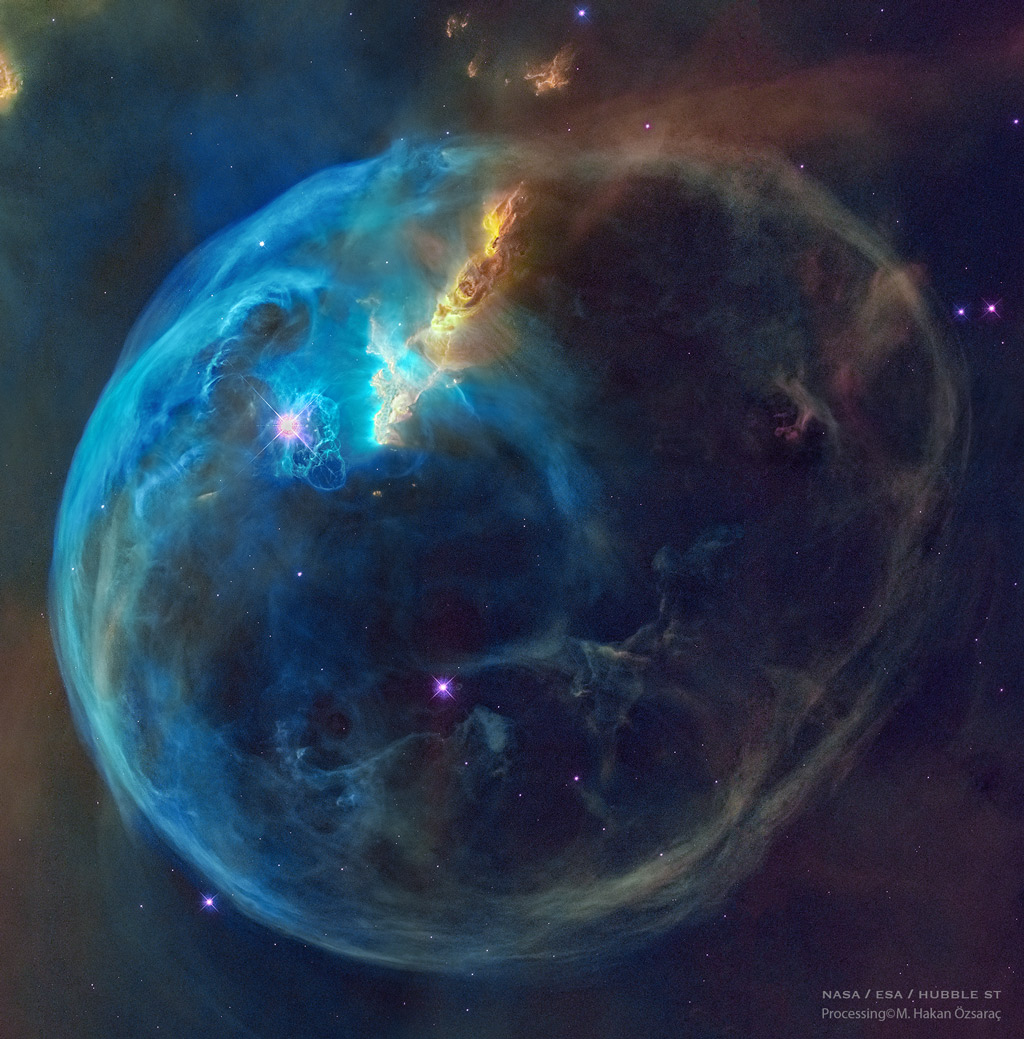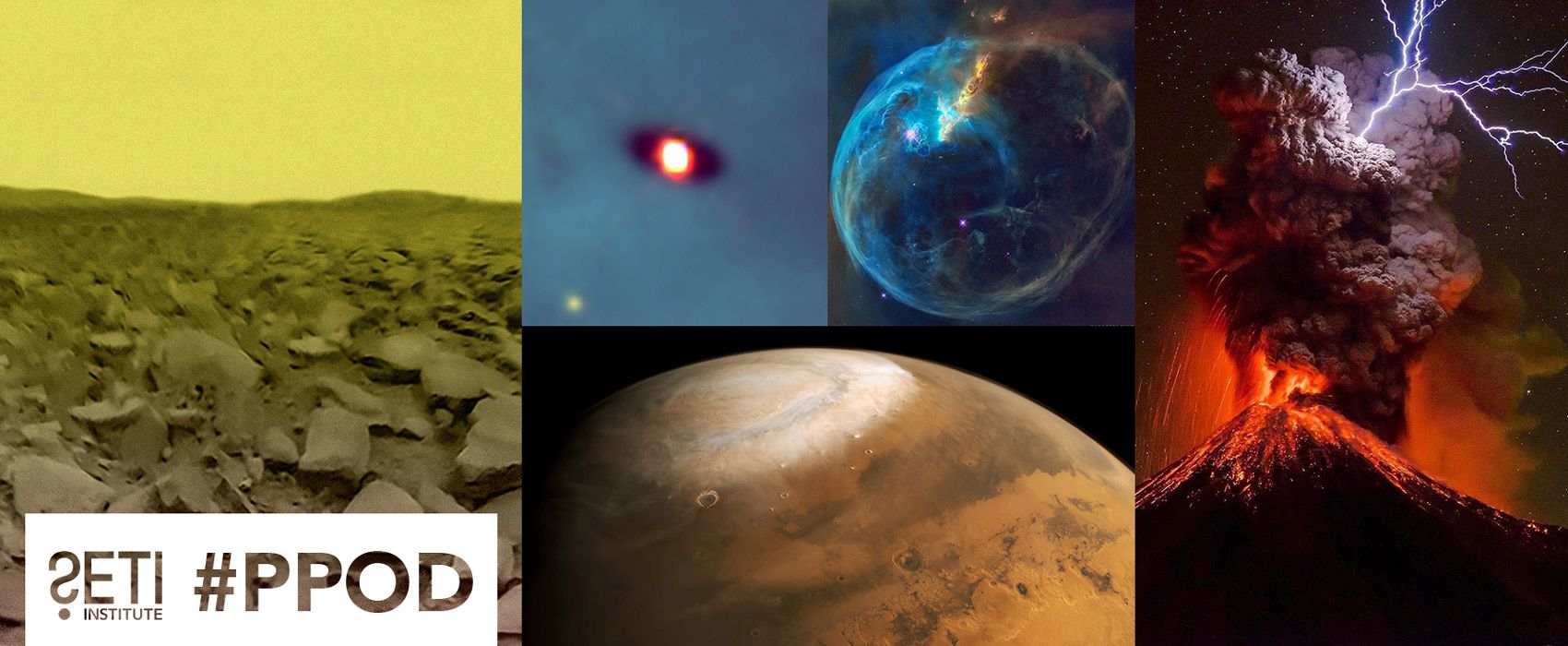
Planetary Picture of the Day
Week of February 7, 2022
No matter the February weather wherever you live, these images from space are beautiful!
Monday, February 7, 2022
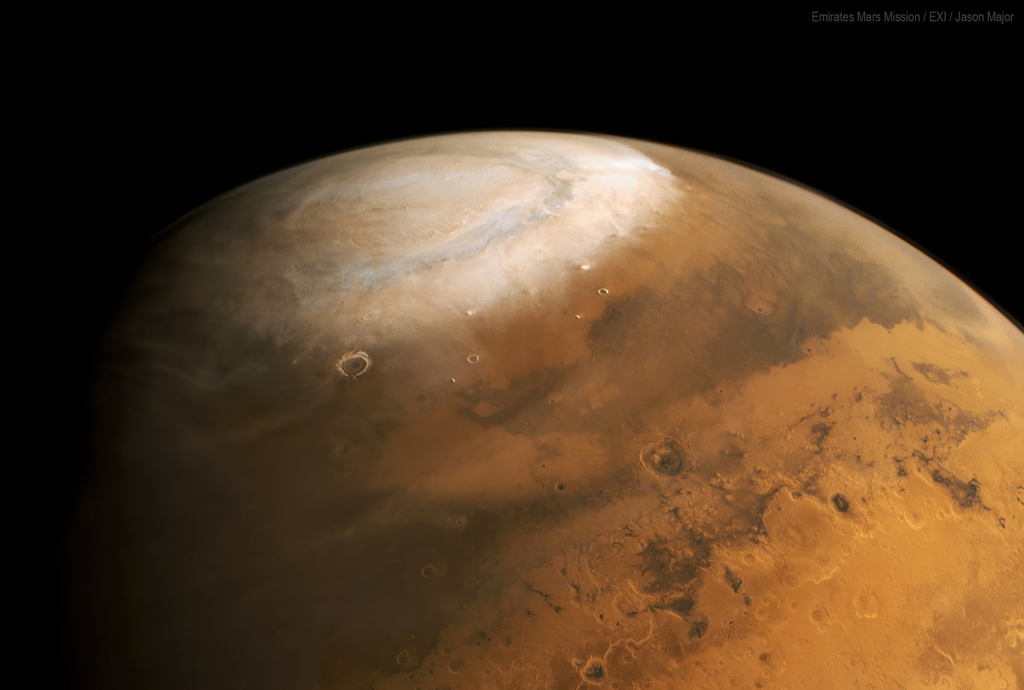
Credit: Emirates Mars Mission / EXI / Jason Major
Martian North Pole
Absolutely stunning new view of Mars' north polar region made from image data acquired with the EXI camera aboard UAE's Hope Mars Mission orbiter on May 24, 2021. The water ice polar cap is surrounded by an extended but receding region of carbon dioxide ice in the late Martian spring.
Tuesday, February 8, 2022
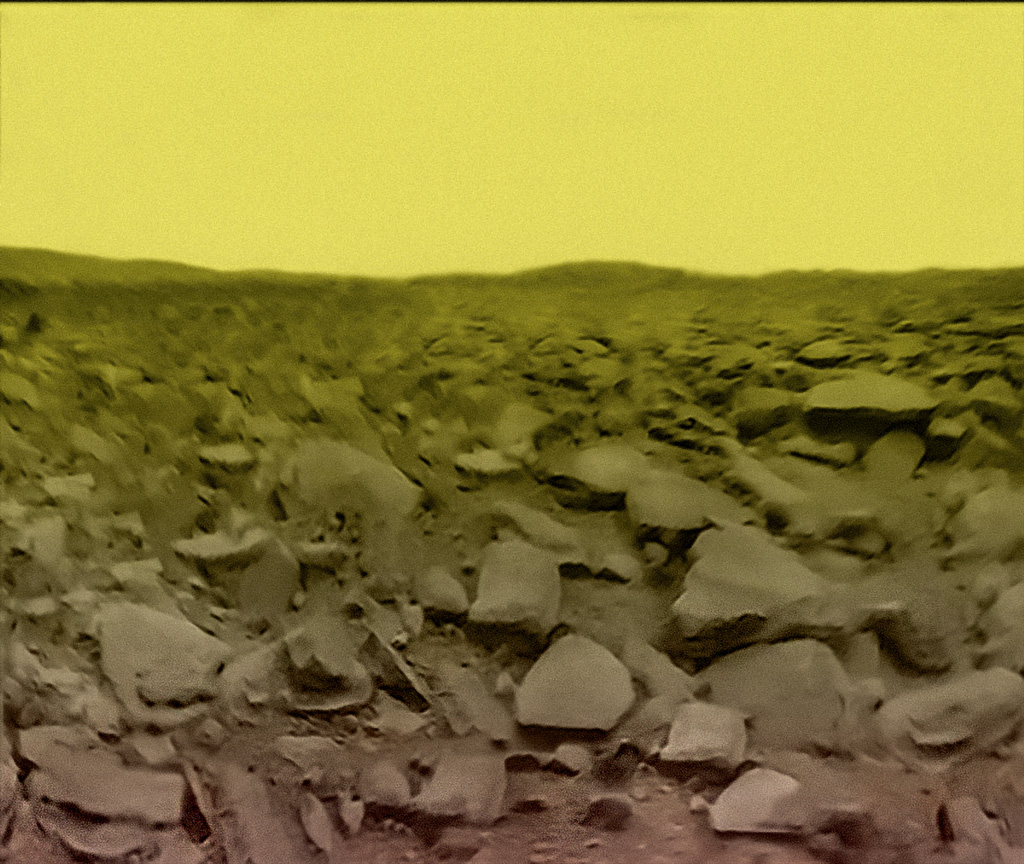
Credit: Lavochkin, USSR
Image Processing: Ted Stryk
Venus Colorized
The surface of Venus as seen in Venera 9 images acquired Oct. 22, 1975 and using the color palette from Venera 13 data. The Venera 9 images were captured as a 180-degree panorama that has been rectified to a more natural angle.
Wednesday, February 9, 2022
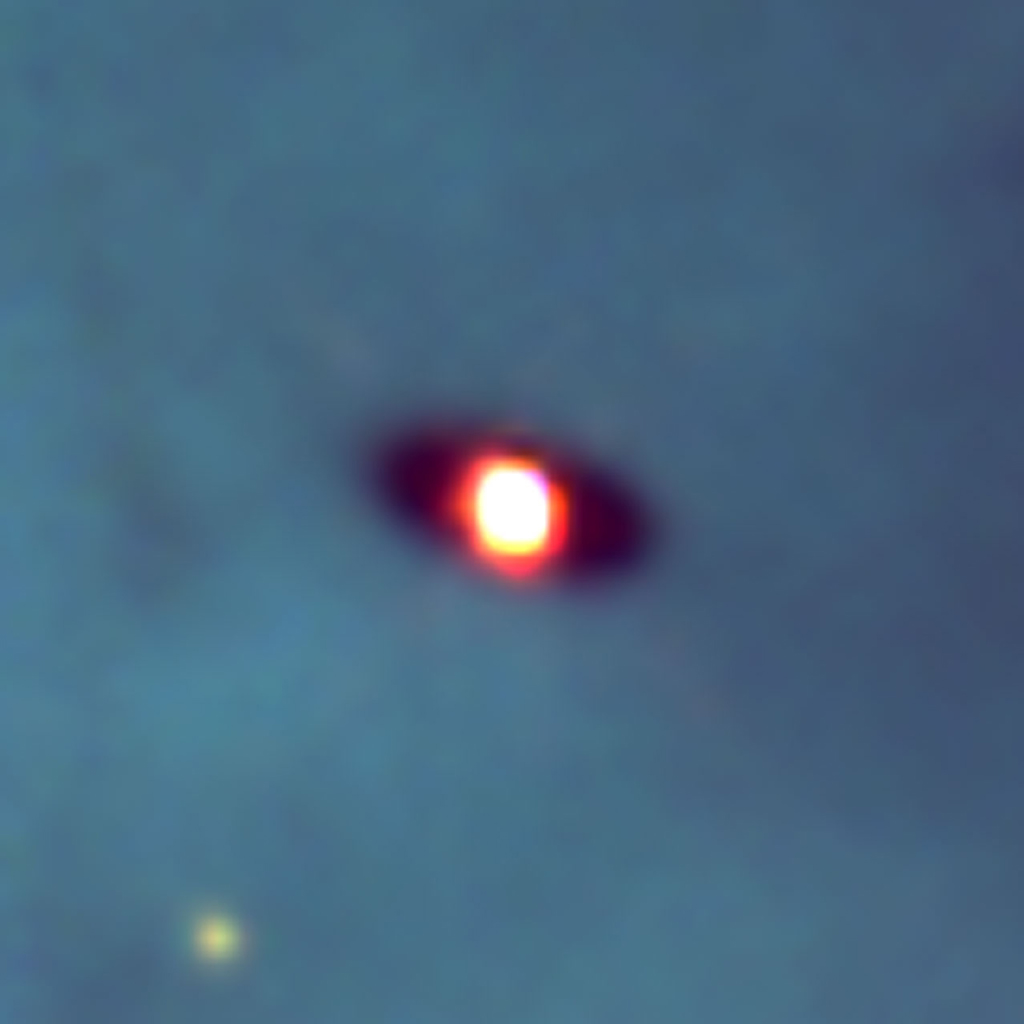
Credit: Mark McCaughrean (Max-Planck-Institute for Astronomy), C. Robert O'Dell (Rice University), and NASA/ESA
Protoplanetary disc in the Orion Nebula
Disks around young stars (also known as circumstellar or protoplanetary disks) are thought to be made up of 99% gas and 1% dust. Even that small amount of dust is enough to make the disks opaque and dark at visible wavelengths. The dark disk is seen in this image because it is silhouetted against the bright backdrop of the hot gas of the Orion nebula. In the very early stages over 4.5 billion years ago, our solar system would have looked just like that to an alien observer.
Thursday, February 10, 2022
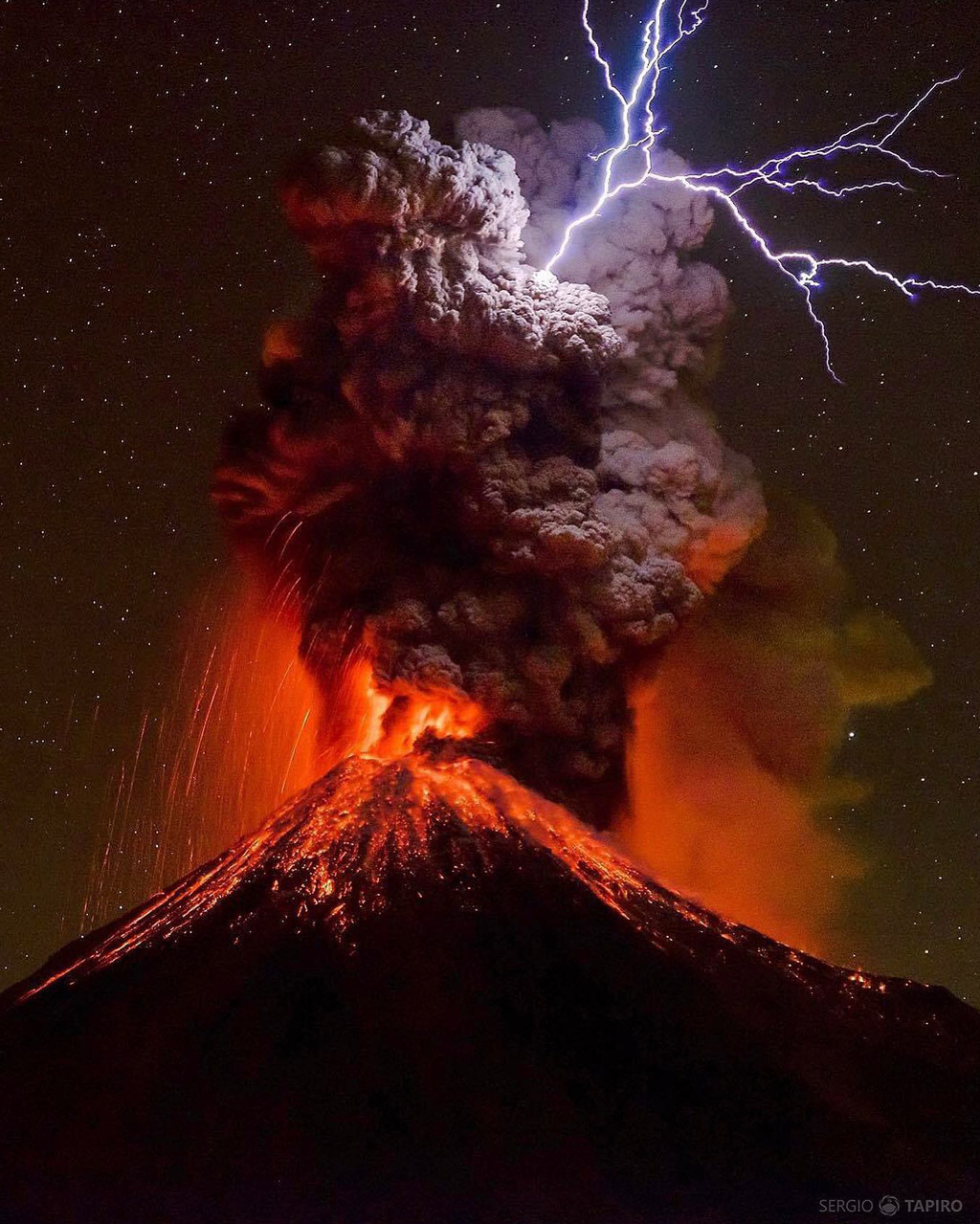
Volcanic Lightning
Lightning isn't just the domain of rainstorms and weather. When ash particles collide with bits of rock and even ice in the massive ash plumes of an eruption, they can generate static electric charges. Those charges separate into regions, and the breakdown causes the amazing lightning seen in this image, a fantastic demonstration captured during an eruption of the Colima volcano in México.
Friday, February 11, 2022
Credit: NASA / ESA / Hubble Space Telescope / M. Hakan Özsaraç
The Bubble Nebula - NGC 7635
An enormous bubble is blown into space by a super-hot, massive star in this image of NGC 7635, or the Bubble Nebula.
The Bubble Nebula is 7 light-years across — about one-and-a-half times the distance from our sun to its nearest stellar neighbor, Alpha Centauri — and resides 7,100 light-years from Earth in the constellation Cassiopeia.

